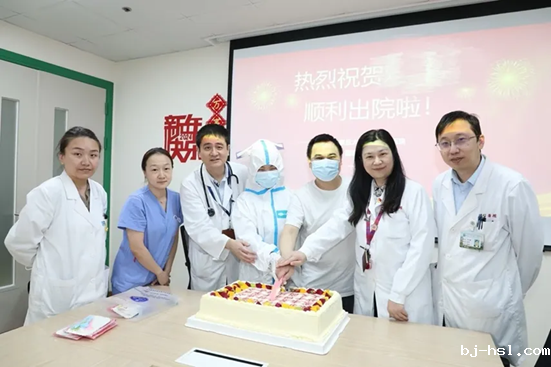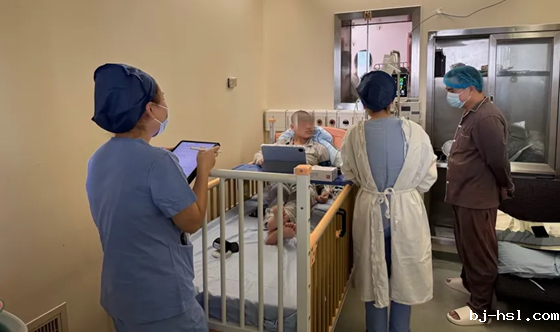
On the morning of November 13, 2024, a warm and grand discharge ceremony was held at the Children's Hospital of Fudan University. Xuan Xuan (alias), a 14-year-old boy with β-thalassemia major (β-TM), was successfully discharged following gene therapy. He is the first β-TM patient cured at our hospital after the investigational base editing drug CS-101—developed through a clinical research collaboration between Director Zhai Xiaowen’s hematopoietic stem cell transplantation (HSCT) team and CorrectSequence Therapeutics—received regulatory approval. Under meticulous care by the HSCT team, Xuan Xuan achieved successful engraftment merely two weeks post-CS-101 infusion and was completely freed from transfusion dependence. Five weeks post-treatment, his hemoglobin levels exceeded 120 g/L, reaching the normal range, with the entire therapeutic course progressing smoothly.

Reflecting on 14 years of arduous medical journeys, Xuan Xuan’s father expressed profound emotion. He emphasized that β-TM patients require lifelong transfusion therapy, often accompanied by multi-organ damage, disability, and reduced life expectancy, imposing severe financial burdens on families. This novel gene therapy now offers not only hope for cure but liberation from transfusion dependence. In gratitude, the father presented the medical team with a commemorative plaque and celebrated Xuan Xuan’s recovery with a cake-cutting ceremony. The hematology department gifted Xuan Xuan—an avid sports enthusiast—a pair of table tennis paddles, symbolizing their wish for his return to normal study, life, and athletic activities.
Thalassemia, an autosomal genetic disorder causing abnormal hemoglobin synthesis, affects ~7% of the global population as carriers (WHO data), with 300,000–400,000 new cases annually. China has ~30 million carriers and ~300,000 patients with transfusion-dependent β-thalassemia major or intermediate forms, concentrated in southern regions. Standard care relies on chronic transfusions and allogeneic HSCT, yet both carry significant complications and socioeconomic burdens.

Recent advances in gene therapy offer curative potential. CorrectSequence Therapeutics’ CS-101—an investigational base editing drug—utilizes proprietary transformer Base Editor (tBE) technology. Autologous hematopoietic stem cells are collected, and precise base editing is performed on the HBG1/2 promoter regions to mimic naturally occurring beneficial mutations. This reactivates γ-globin expression, restoring oxygen-carrying capacity of hemoglobin. Upon reinfusion, edited cells elevate hemoglobin to healthy levels, eliminating transfusion dependence.
Preclinical studies demonstrated robust efficacy and safety profiles at cellular, organ, and animal levels. Since 2022, our HSCT team and CorrectSequence have collaborated to advance this technology through preclinical research into clinical application. In 2023, a joint clinical study evaluating CS-101’s safety and efficacy for β-TM was initiated.
This successful case heralds a "single-treatment, lifelong cure" paradigm for β-TM patients. It accelerates clinical translation of China’s pioneering gene-editing therapeutics and offers new treatment strategies for patients worldwide.